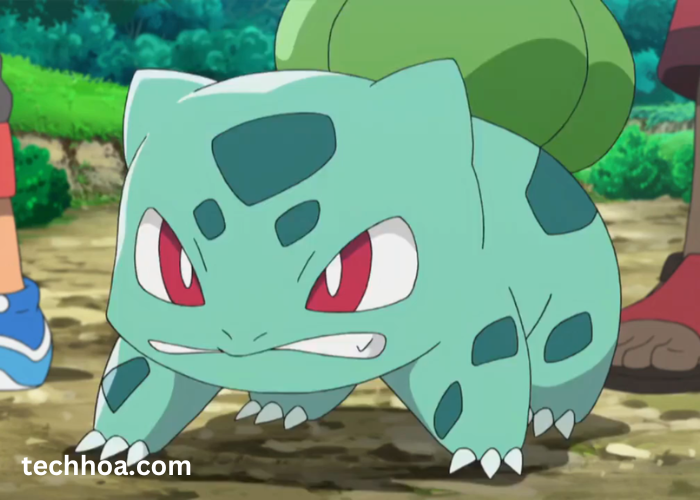Since its inception in 1996, the Pokémon franchise has captivated millions of fans worldwide with its unique blend of adventure, strategy, and the thrill of discovery. One of the most intriguing aspects of the Pokémon games is the concept of evolution—how Pokémon grow, change, and adapt as they gain experience. This article delves into the evolutionary mechanics within the Pokémon universe, from the humble beginnings with Bulbasaur to the complex transformations of legendary creatures like Eternatus. Discover the art of tatsugiri on our website, where we showcase a wide range of exquisite designs and techniques. Explore the beauty and craftsmanship of this ancient Japanese sword art form.
The Basics of Pokémon Evolution
In the Pokémon world, evolution is a process where a Pokémon changes into a different species, usually becoming stronger and gaining new abilities. This mechanic was first introduced in the original games, Pokémon Red and Blue. Players quickly learned that certain Pokémon could evolve when they reached a specific level, used a special item, or were traded with another player.
Take Bulbasaur, for example. Bulbasaur, the Grass/Poison-type Pokémon, evolves into Ivysaur at level 16 and then into its final form, Venusaur, at level 32. This linear evolutionary path is common among many Pokémon, providing a straightforward progression system that rewards players for training and leveling up their Pokémon.
Diverse Evolution Methods
As the series expanded, so did the methods of evolution. While leveling up remains a primary mechanism, various other methods have been introduced:
- Item-based Evolution: Some Pokémon require specific items to evolve. For instance, Pikachu evolves into Raichu when exposed to a Thunder Stone. Similarly, Eevee, known for its multiple evolutionary forms (or “Eeveelutions”), can evolve into Vaporeon, Jolteon, or Flareon using Water, Thunder, or Fire Stones, respectively.
- Trade-based Evolution: Certain Pokémon evolve only when traded between players. For example, Machoke evolves into Machamp when traded, emphasizing the social aspect of the games and encouraging player interaction.
- Happiness-based Evolution: Some Pokémon evolve when they reach a high level of happiness or friendship with their trainer. An example is Togepi evolving into Togetic when it has a high friendship level.
- Environmental Evolution: In later games, the environment can influence evolution. Eevee evolves into Leafeon or Glaceon when leveled up near specific rocks (Moss Rock or Ice Rock, respectively).
- Time-based Evolution: Pokémon like Eevee can evolve into Espeon or Umbreon depending on the time of day (day or night) when they reach the required friendship level.
- Move-based Evolution: Some Pokémon require knowing a specific move to evolve. Piloswine, for instance, evolves into Mamoswine when it knows the move Ancient Power.
Legendary and Mythical Evolutions
The introduction of Legendary and Mythical Pokémon added another layer of complexity to the evolution mechanics. These Pokémon typically do not evolve, which sets them apart as powerful, standalone entities within the Pokémon lore. However, some Legendary Pokémon have forms that change under certain conditions. For instance, Giratina has two forms: Altered Forme and Origin Forme, the latter being accessible when holding the Griseous Orb.
Eternatus, introduced in Pokémon Sword and Shield, represents a unique case. While it doesn’t evolve, it has an Eternamax form, which appears during the climax of the game’s storyline. This form significantly boosts Eternatus’ stats, showcasing a different type of evolution-like transformation.
Mega Evolution, Gigantamax, and Regional Forms
Game Freak, the developers of Pokémon, continually innovate the evolution mechanics to keep the gameplay fresh and exciting. Mega Evolution, introduced in Pokémon X and Y, allows certain Pokémon to temporarily evolve into a more powerful form during battle. This mechanic adds a strategic element, as players must decide the optimal time to unleash their Pokémon’s Mega Evolution.
In Pokémon Sword and Shield, the Gigantamax phenomenon provides another twist. Certain Pokémon can Gigantamax, growing to enormous sizes and gaining access to powerful G-Max moves. Unlike regular Dynamax, Gigantamax changes the Pokémon’s appearance and abilities.
Regional forms, introduced in Pokémon Sun and Moon, present another variation. Some Pokémon have different forms depending on the region they inhabit. For instance, Alolan Vulpix is an Ice-type, contrasting sharply with the Fire-type Kanto Vulpix.
The Future of Pokémon Evolution
As the Pokémon series continues to evolve, so too will the mechanics that underpin it. The introduction of new games, regions, and Pokémon will undoubtedly bring fresh evolutionary methods and surprises. The franchise’s ability to innovate while maintaining its core principles is a testament to its enduring appeal.
From Bulbasaur’s straightforward evolution to the multifaceted transformations of modern Pokémon like Eternatus, the evolutionary mechanics of Pokémon are a rich tapestry that reflects the creativity and depth of the series. Whether you’re a veteran trainer or a newcomer, the journey of discovering and evolving Pokémon remains as exciting as ever.






